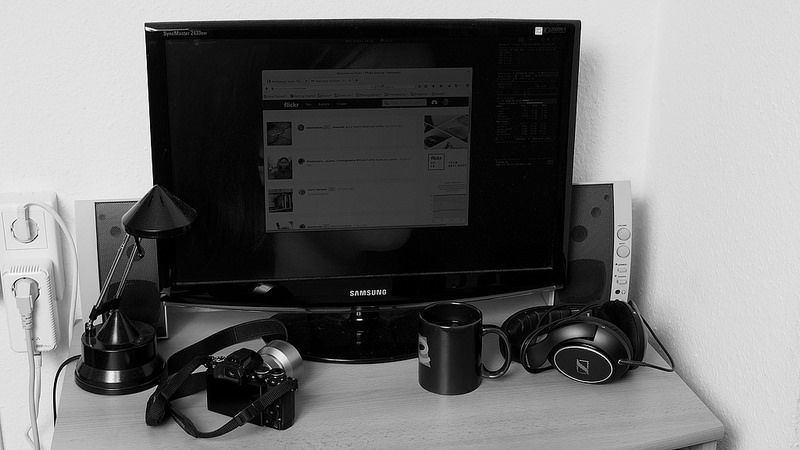Someone recently asked about an article which I’ve written earlier, but which cannot be restored – we don’t have a database backup from that time. It was about the blacks in my photos. And today I’ve got a somehow similar question by email from a friend. And looking in front of myself, on my desk I saw lots of black (or at least very dark) stuff, so I decided to take a photo of it:
About the technique I use:
– first, I make sure that I have the correct exposure. While for many outdoor scenes I can trust the center-weighted setting of my cameras, indoors I always use a light meter, especially when using a studio strobe like I did here.
– second, and maybe of equal importance: I use the widest possible colour space I can get from my cameras, which is AdobeRGB (instead of sRGB). Some modern printing systems can go even wider, but there aren’t many non-pro cameras on the market which can be set to take Profoto images.
– I expose “correctly”, which means I take everything I can get into the 12 bit dynamics of my cameras. If you have 14 or even 16 bit, all the better for you.
– then I convert from the raw .orf files to 16 bit .tif using the Olympus Viewer 3 raw converter, checking for any over- or underexposure again, and also for a correct white balance (which was set in camera already, but sometimes it can still be enhanced). OV3 doesn’t exist for my Linux machine, so I dual-boot into Win10 or fire up s small Win7 virtual machine to do this. I’m on SSD nowadays, so both ways are fast.
– back in Linux, I use RawTherapee for final checks, conversions to black & white, cropping, and to give images some more Exif data, like a title and some tags.
That’s mostly it. I think the most important steps are to set your camera to AdobeRGB (or to whatever the biggest colour space it offers), and to expose correctly. Having a current sensor with a wide dynamic range (check DxO for this) also helps.
The rest – and any post processing – is up to personal bias and taste. Look at Ming Thein who does a very good job concerning the blacks in his images. Another example would be the Leica photographer Thorsten Overgaard.
Hoping that this is useful,
thanks for reading.


